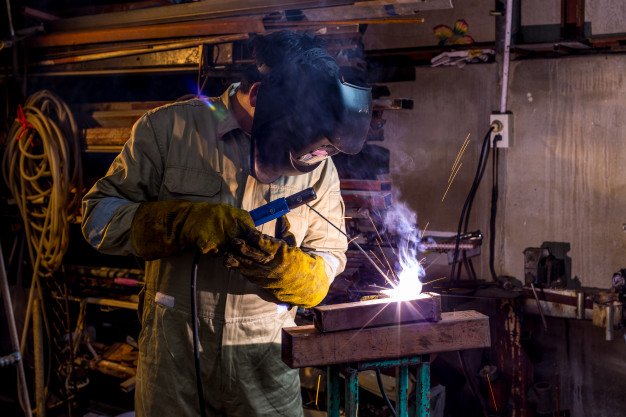Welding is the process of joining materials such as thermoplastics and metals together in a smooth manner. Welding needs the application of both pressure and heat to the materials being connected, as well as the use of filler material to produce a weld pool that cools and forms a highly strong connection. The welding process has progressed significantly over time, and there are currently several welding processes available. You must select the appropriate one for the task at hand in order to achieve the greatest results. Let’s have a look at the many types of welding that are accessible.
Arc welding
Arc welding requires electrodes and a power supply to create a welding arc between the welded material and the electrode. This causes the materials to melt, allowing them to cool and fuse together. This is the most frequent welding method, and it comprises three of the most common welding types: stick, TIG, and MIG. Both non-consumable and consumable electrode techniques are available.
Stick welding is a relic of the past. It’s a type of hand welding that uses disposable electrodes that have been coated with flux before being utilized to lay down the weld.
Stick welding gets its name from the fact that it employs welding rods or sticks comprised of flux and filler material. The filler binds the metal parts together while the flux shields the molten metal in the weld. Stick welding is a low-cost method that requires little equipment. Unfortunately, the final weld quality isn’t always ideal, since it might have shallow penetration, porosity, weather vulnerability, decreased durability, and cracking. Stick welding is still used in the automotive, construction, plumbing, and refrigeration industries.
MIG Welding
Welding in this style is also extremely popular. MIG welding, which stands for Metal Inert Gas Welding, joins two metal pieces together with the use of a wire connected to the electrode current. The wire is guided through an inert gas-shielded welding stick. MIG welding offers a number of advantages over other welding processes, including its user-friendliness and the lower level of accuracy required by the operator to create a good weld. Wind, dust, rain, and other environmental variables make MIG welding more susceptible. The wire speed and voltage must also be fine-tuned by the operator. When done correctly, it produces a solid, strong weld, making it a preferred type of welding in automobile repairs.
Welding using a Flux Cored Arc
Flux Cored Arc Welding employs tubular wire loaded with flux, similar to MIG welding. Depending on the filler used, shielding gas isn’t always required with this method of welding. Flux-cored arc welding is an excellent choice for novices since it is easy to learn and inexpensive, even if the results aren’t always visually attractive.
Welding Using a Submerged Arc
Submerged arc welding, which is commonly employed on nickel-based and ferrous steel alloys, is popular because of its low fume emissions. It produces a deep weld with minimum preparation, making it efficient and fast.
TIG Welding
Tungsten Inert Gas welding is a non-consumable method that produces a high-quality, robust weld using argon gas. Bypassing an electric current via a tungsten electrode, this type of welding generates heat. TIG welding is widely used to weld stainless steel, copper, nickel, aluminium, and magnesium, and is suitable for a wide range of applications.
Welding using Electroslag
This is a high-efficiency single-pass welding method that is commonly used on non-ferrous thick materials. It is a difficult method that necessitates a high level of expertise and is widely utilized in the aerospace and maritime sectors.
Welding using Gas
This is also known as oxyacetylene welding and is very old technology. It may be ancient, but it is still used in tube and pipe welding today.
Welding in Solid State
This type of welding is done at temperatures below the melting point of the materials and does not require any filler. Pressure, time, and temperature all play a part in connecting the metals without severely melting them.
There are many various forms of welding, and each requires a different sort of welding equipment, some of which is simple to operate and others of which is more sophisticated and require more experience. Knowing which welding technique is suitable for each job is crucial to achieving optimum welding success.

